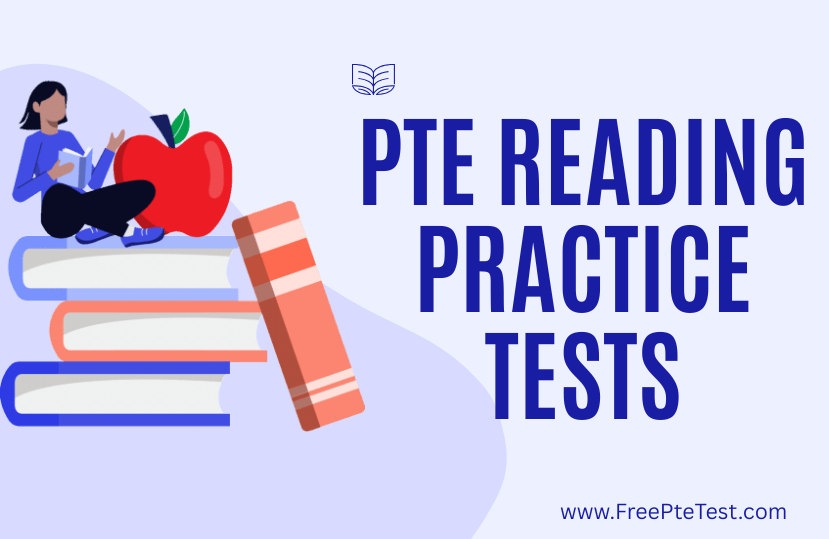The Pearson Test of English (PTE) Academic is a globally recognized English language proficiency test, widely accepted by employers, professional bodies, and immigration authorities in English-speaking countries such as Australia, Canada, the UK, and New Zealand.
For professionals seeking employment opportunities abroad, the PTE Test for Work is a critical tool to demonstrate English fluency, enhancing job prospects and career advancement. As of September 2025, the PTE Academic has undergone significant updates, including new speaking tasks, refined scoring with expanded human oversight, and enhanced digital preparation resources.
These changes make it more aligned with workplace communication demands, such as clarity in presentations and effective teamwork. This article explores the importance of the PTE Test for Work, its format, preparation strategies, and tips for achieving high scores, leveraging freeptetest resources to ensure success in 2025.
Why the PTE Test for Work Matters
The PTE Academic is a computer-based test designed to assess English proficiency in academic and professional contexts, making it ideal for workplace requirements. Employers in English-speaking countries often require proof of language skills to ensure candidates can communicate effectively with colleagues, clients, and stakeholders. The PTE Test for Work is particularly relevant for:
- Visa Applications: Many work visas, such as Australia’s Skills in Demand (SID) Visa or the UK’s Skilled Worker Visa, require English proficiency at levels like B1 or B2 on the Common European Framework of Reference (CEFR), equivalent to PTE scores of 36–50 or 51–65.
- Professional Licensing: Fields like healthcare, engineering, and education often mandate PTE scores for registration with bodies like the Nursing and Midwifery Council (UK) or Engineers Australia.
- Career Advancement: A high PTE score signals fluency, boosting competitiveness for roles requiring presentations, report writing, or client interactions.
- Global Mobility: Multinational companies value PTE scores for hiring in English-speaking branches, facilitating international transfers.
In 2025, updates to the PTE Academic, including tasks like Summarize Group Discussion, mirror workplace scenarios, ensuring candidates are tested on skills directly applicable to professional environments. Freeptetest offers tailored resources to meet these updated requirements.
PTE Test Format and 2025 Updates
The PTE Academic is a 2–2.15-hour test delivered at secure Pearson VUE centers, assessing four skills: Speaking, Writing, Reading, and Listening. It comprises 65–75 tasks across three sections, with a 10-minute optional break. The August 2025 updates introduced significant changes to enhance workplace relevance:
- Task Count: Increased to 65–75 tasks, with the Speaking and Writing section extended to 76–84 minutes.
- New Speaking Tasks: Summarize Group Discussion and Respond to a Situation test collaborative and situational communication, critical for workplace settings.
- Scoring Enhancements: AI-driven scoring remains, with human oversight expanded to five tasks (e.g., Write Essay) to assess content authenticity and penalize memorized responses.
- Result Delivery: Results are now available within 2 business days, down from 5, aiding urgent job or visa applications.
Test Structure
- Speaking and Writing (76–84 minutes): 35–45 tasks, including Personal Introduction (unscored), Read Aloud, Describe Image, Write Essay, and new tasks like Summarize Group Discussion. These assess fluency, coherence, and written communication.
- Reading (29–30 minutes): 13–18 tasks, such as Fill in the Blanks and Multiple-Choice, testing comprehension and vocabulary.
- Listening (30–43 minutes): 12–20 tasks, including Summarize Spoken Text and Write from Dictation, evaluating note-taking and accent comprehension.
Scores range from 10–90, with 36 (B1), 51 (B2), or 65 (C1) often required for work-related purposes. Freeptetest provides updated practice materials reflecting these changes.

Preparing for the PTE Test for Work
Effective preparation is crucial to achieving target scores for professional goals. Freeptetest resources, aligned with 2025 updates, offer comprehensive tools for success. Below are key strategies:
1. Understand the Test Format
Familiarity with the PTE structure is foundational. Review the 22 task types, focusing on new additions like Summarize Group Discussion, which simulates workplace meetings. Freeptetest provides detailed guides and sample questions for each task, ensuring candidates know what to expect. For example:
- Speaking Tasks: Practice Read Aloud for pronunciation and Respond to a Situation for quick thinking.
- Writing Tasks: Focus on Write Essay, structuring responses with clear arguments, as required in professional reports.
- Reading and Listening: Use freeptetest’s practice tests to master time allocation for tasks like Re-order Paragraphs or Highlight Incorrect Words.
2. Enhance English Language Skills
Strong English proficiency is essential for workplace success. Freeptetest recommends:
- Reading: Engage with English-language materials like The Economist, BBC News, or industry reports to build vocabulary and comprehension. Aim for 30–60 minutes daily.
- Listening: Listen to podcasts (e.g., TED Talks, BBC Radio 4) or audiobooks to adapt to diverse accents, critical for tasks like Summarize Spoken Text.
- Speaking: Practice with native speakers via language exchange platforms or colleagues, focusing on fluency and pronunciation. Freeptetest’s speaking prompts simulate workplace scenarios.
- Writing: Draft emails, reports, or essays using freeptetest templates to improve grammar, coherence, and professional tone.
3. Take Mock Examinations
Mock tests replicate the PTE environment, helping candidates gauge readiness. Freeptetest offers timed simulations with AI-scored feedback, mirroring the test’s scoring algorithm. Benefits include:
- Identifying strengths (e.g., high reading scores) and weaknesses (e.g., speaking fluency).
- Practicing under timed conditions to build speed.
- Adapting to computer-based tasks, such as typing essays or navigating audio prompts.
Aim for 2–3 mock tests weekly during a 4–8-week preparation period.
4. Master Time Management
The PTE’s strict time limits demand efficient strategies:
- Allocate Time Per Task: E.g., 2 minutes for Describe Image, 20 minutes for Write Essay. Freeptetest’s timed drills help practice pacing.
- Prioritize Questions: Tackle high-scoring tasks (e.g., Write from Dictation) first, as they contribute significantly to overall scores.
- Review Instructions: Read prompts carefully to avoid errors, using freeptetest’s sample instructions for practice.
5. Develop Exam Strategies
Strategic approaches boost scores:
- Speaking: Speak clearly at a natural pace, avoiding filler words. Practice with freeptetest’s audio prompts to refine pronunciation.
- Writing: Plan essays with a 2-minute outline (introduction, body, conclusion) to ensure coherence. Use freeptetest templates for structure.
- Reading: Skim passages for main ideas, underlining keywords. Freeptetest’s reading exercises teach skimming techniques.
- Listening: Take brief notes during audio tasks, focusing on key points. Freeptetest’s note-taking templates enhance efficiency.
Tips for Achieving a High Score on the PTE Test for Work
Speaking Section
- Clarity and Confidence: Speak loudly and clearly into the microphone, as tested in workplace scenarios like presentations. Freeptetest’s speaking simulator provides real-time feedback.
- Pronunciation and Grammar: Practice with native English content (e.g., news broadcasts) to ensure accuracy. Avoid memorized responses, as 2025 updates penalize them.
- Workplace Relevance: Use freeptetest’s new tasks (e.g., Summarize Group Discussion) to practice summarizing meetings or responding to client queries.
Writing Section
- Follow Instructions: Adhere to word limits (e.g., 200–300 for essays) and task requirements. Freeptetest’s writing prompts ensure compliance.
- Organize Ideas: Create a quick outline before writing to maintain structure. Practice with freeptetest’s essay templates.
- Grammar and Punctuation: Use tools like freeptetest’s grammar checker to refine responses, ensuring professional-quality writing.
Reading Section
- Skim First: Scan passages for main ideas before deep reading to save time. Freeptetest’s skimming exercises build this skill.
- Highlight Keywords: Mark important terms while reading to answer questions efficiently. Practice with freeptetest’s interactive tools.
- Answer Strategically: Respond without re-reading if confident, as time is limited. Freeptetest’s timed quizzes reinforce this approach.
Listening Section
- Active Listening: Focus on audio content, noting key details (e.g., names, dates). Freeptetest’s audio exercises simulate workplace dialogues.
- Grammar in Responses: Ensure written answers (e.g., Summarize Spoken Text) are error-free. Use freeptetest’s feedback tools.
- Exposure to Accents: Regularly listen to diverse English sources (e.g., Australian, British podcasts) via freeptetest’s curated resources.
2025 Updates and Their Impact
The August 2025 updates enhance the PTE’s relevance for work:
- New Tasks: Summarize Group Discussion and Respond to a Situation mirror workplace communication, such as summarizing team meetings or handling client requests.
- Human Oversight: Expanded to five tasks, ensuring authentic responses are rewarded, critical for professional credibility.
- Faster Results: 2-day turnaround supports urgent job or visa applications.
- Digital Enhancements: Freeptetest’s updated platform includes AI-driven practice for new tasks, with real-time scoring and feedback.
These changes make the PTE more rigorous but better suited for workplace demands, emphasizing spontaneous communication and practical skills.
Cost and Accessibility
As of 2025, PTE Academic fees vary by region:
- Standard Fee: Approximately £160–£220 (e.g., INR 15,900–16,500 in India), reflecting a 5–10% increase due to enhanced security.
- Additional Costs: Rescheduling (£30–£50), late booking (£20–£40), extra score reports (£15).
- Discounts: Fee waivers for financial hardship and 10–15% group discounts, accessible via freeptetest guides.
The test is available at over 400 global test centers, with 50 new centers added in 2025 (e.g., 15 in Asia). Freeptetest’s booking tools help secure slots efficiently.
Workplace Applications and Score Requirements
Employers and visa authorities typically require:
- B1 Level (PTE 36–50): For roles like customer service or entry-level administration.
- B2 Level (PTE 51–65): For professional roles like nursing, engineering, or teaching.
- C1 Level (PTE 76–84): For senior roles or licensing (e.g., medical practitioners).
Freeptetest’s score calculators align PTE results with job-specific requirements, ensuring candidates target appropriate levels.
The PTE Test for Work is a vital stepping stone for professionals seeking opportunities in English-speaking countries. Its 2025 updates, including new speaking tasks and faster results, enhance its relevance for workplace communication.
By mastering the test format, improving English skills, and using strategic preparation with freeptetest, candidates can achieve high scores (e.g., 51 for B2) to unlock job prospects, visa approvals, or professional licensing.
With a 4–8-week preparation plan, leveraging freeptetest’s mock tests and tailored resources, professionals can confidently navigate the PTE Academic and advance their careers in 2025.



